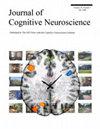Age-related Electrophysical Correlates of Cross-modal Attention Switching
IF 3.1
3区 医学
Q2 NEUROSCIENCES
引用次数: 0
Abstract
The human experience demands seamless attentional switches between sensory modalities. Aging raises questions about how declines in auditory and visual processing affect cross-modal attention switching. This study used a cued cross-modal attention-switching paradigm where visual and auditory stimuli were simultaneously presented on either spatially congruent or incongruent sides. A modality cue indicated the target modality, requiring a spatially left versus right key-press response. EEG recordings were collected during task performance. We investigated whether the mixing costs (decreased performance for repetition trials in a mixed task compared with a single task) and switch costs (decreased performance for a switch of target modality compared with a repetition) in cross-modal attention-switching paradigms would exhibit similarities in terms of behavioral performance and the ERP components to those observed in the traditional unimodal attention-switching paradigms. Specifically, we focused on the ERP components: cue-locked P3 (mixing/switch-related increased positivity), target-locked P3 (mixing/switch-related decreased positivity), and target-locked lateralized readiness potential (mixing/switch-related longer latency). In addition, we assessed how aging impacts cross-modal attention-switching performance. Results revealed that older adults exhibited more pronounced mixing and switch costs than younger adults, especially when visual and auditory stimuli were presented on incongruent sides. ERP findings showed increased cue-locked P3 amplitude, prolonged cue-locked P3 latency, decreased target-locked P3 amplitude, prolonged target-locked P3 latency in association with switch costs, and prolonged onset latency of the target-locked lateralized readiness potential in association with the mixing costs. Age-related effects were significant only for cue-locked P3 amplitude, cue-locked P3 latency (switch-related), and target-locked P3 latency (switch-related). These findings suggest that the larger mixing costs and switch costs in older adults were due to the inefficient use of modality cues to update a representation of the relevant task sets, requiring more processing time for evaluating and categorizing the target.与年龄相关的跨模态注意力转换的电生理相关性
人类的经验要求在各种感官模式之间进行无缝的注意力切换。老龄化提出了听觉和视觉处理能力下降如何影响跨模态注意力切换的问题。本研究采用了一种有提示的跨模态注意切换范式,即视觉和听觉刺激同时出现在空间一致或不一致的两侧。模态线索指示目标模态,要求按下空间左键或右键做出反应。我们在任务执行过程中收集了脑电图记录。我们研究了跨模态注意切换范式中的混合成本(与单一任务相比,混合任务中重复试验的表现下降)和切换成本(与重复相比,目标模态切换的表现下降)是否会在行为表现和 ERP 成分方面表现出与传统单模态注意切换范式中观察到的相似之处。具体来说,我们重点研究了ERP成分:线索锁定P3(与混合/切换相关的正向性增加)、目标锁定P3(与混合/切换相关的正向性降低)和目标锁定侧化准备潜能(与混合/切换相关的潜伏期延长)。此外,我们还评估了衰老如何影响跨模态注意转换表现。结果显示,老年人比年轻人表现出更明显的混合和切换成本,尤其是当视觉和听觉刺激呈现在不一致的一侧时。ERP研究结果显示,与切换成本相关的线索锁定P3振幅增加、线索锁定P3潜伏期延长、目标锁定P3振幅降低、目标锁定P3潜伏期延长,以及与混合成本相关的目标锁定侧化准备电位起始潜伏期延长。与年龄相关的影响仅对线索锁定 P3 波幅、线索锁定 P3 潜伏期(与转换相关)和目标锁定 P3 潜伏期(与转换相关)有显著影响。这些研究结果表明,老年人的混合成本和转换成本较高,这是因为他们不能有效地利用模式线索来更新相关任务集的表征,并且需要更多的处理时间来评估和分类目标。
本文章由计算机程序翻译,如有差异,请以英文原文为准。
求助全文
约1分钟内获得全文
求助全文
来源期刊
CiteScore
5.30
自引率
3.10%
发文量
151
审稿时长
3-8 weeks
期刊介绍:
Journal of Cognitive Neuroscience investigates brain–behavior interaction and promotes lively interchange among the mind sciences.

 求助内容:
求助内容: 应助结果提醒方式:
应助结果提醒方式:


